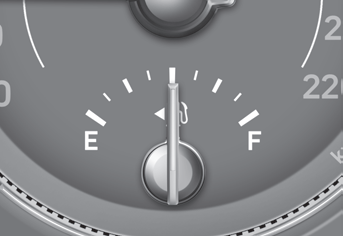Hyundai Venue: Forward Collision-Avoidance Assist (FCA) System-Sensor Fusion / FCA Warning Message and System Control
FCA produces warning messages and warning alarms in accordance with the collision risk levels, such as abrupt stopping of the vehicle in front, insufficient braking distance, or pedestrian detection. Also, it controls the brakes in accordance with the collision risk levels.
Collision Warning (First warning)

This warning message appears on the LCD display with a warning chime. Additionally, some vehicle system intervention occurs by the engine management system to help decelerate the vehicle.
-- Your vehicle speed may decelerate moderately.
-- FCA system limitedly controls the brakes to preemptively mitigate impact in a
collision.
-- If you select ‘Warning only’, FCA system activates and produces only warning
alarms in accordance with the collision risk levels. You should control the brakes
directly because The FCA system will not control the brakes.
Emergency Braking (Second warning)

This warning message appears on the LCD display with a warning chime.
Additionally, some vehicle system intervention occurs by the engine management system to help decelerate the vehicle.
-- FCA system limitedly controls the brakes to preemptively mitigate impact in
a collision. The brake control is maximized just before a collision.
-- If you select ‘Warning only’, FCA system activates and produces only warning
alarms in accordance with the collision risk levels. You should control the brakes
directly because The FCA system will not control the brakes.
Brake operation
- In an urgent situation, the braking system enters into the ready status for prompt reaction against the driver’s depressing the brake pedal.
- FCA provides additional braking power for optimum braking performance, when the driver depresses the brake pedal.
- The braking control is automatically deactivated, when the driver sharply depresses the accelerator pedal, or when the driver abruptly operates the steering wheel.
- FCA braking control is automatically canceled, when risk factors disappear.
CAUTION
The driver should always use extreme caution while operating the vehicle, whether or not there is a warning message or alarm from FCA system.
- After the brake control is activated, the driver must immediately depress the brake pedal and check the surroundings. The brake activation by the system lasts for about 2 seconds.
- If any other warning sound such as seat belt warning chime is already generated, Forward Collision- Avoidance Assist (FCA) system warning may not sound.
- Playing the vehicle audio system at high volume may prevent occupants from hearing the system warning sounds.
WARNING
The FCA braking control cannot completely stop the vehicle nor avoid all collisions. The driver should hold the responsibility to safely drive and control the vehicle.
WARNING
FCA system logic operates within certain parameters, such as the distance from the vehicle or pedestrian ahead, the speed of the vehicle ahead, and the driver's vehicle speed. Certain conditions such as inclement weather and road conditions may affect the operation of FCA system.
WARNING
Never deliberately drive dangerously to activate the system.
 System Setting and Activation
System Setting and Activation
System setting
• Setting Forward Safety function
The driver can activate FCA by placing the ignition switch to the ON position
and by selecting:
‘User Settings → Driver Assistance → Forward Safety’
-- If you select “Active Assist”, FCA system activates...
 FCA Sensor
FCA Sensor
Front view camera
Front radar
In order for FCA system to operate properly, always make sure the sensor cover
or sensor is clean and free of dirt, snow, and debris...
Other information:
Hyundai Venue (QX) (2020-2025) Service Manual: 35R Clutch Control Solenoid Valve (35R/C_VFS). Specifications
Specifications Shape Items Specifications Control current (voltage) [mA] 0 - 1100 Supply pressure [kpa (kgf/cm², psi)] 1569.06 (16, 227...
Hyundai Venue (QX) (2020-2025) Service Manual: Engine Coolant Temperature Sensor (ECTS). Repair procedures
Inspection 1. Turn ignition switch OFF. 2. Disconnect ECTS connector. 3. Remove the ECTS. 4. After immersing the thermistor of the sensor into engine coolant, measure resistance between ECTS terminals 1 and 3...
Categories
- Manuals Home
- 1st Generation Venue Owners Manual
- 1st Generation Venue Service Manual
- Remote start
- Check Tire Pressure
- To set Cruise Control speed
- New on site
- Most important about car
Fuel gauge

This gauge indicates the approximate amount of fuel remaining in the fuel tank.
Information
The fuel tank capacity is given in chapter 2. The fuel gauge is supplemented by a low fuel warning light, which will illuminate when the fuel tank is nearly empty. On inclines or curves, the fuel gauge pointer may fluctuate or the low fuel warning light may come on earlier than usual due to the movement of fuel in the tank.